RECENT ARTICLES
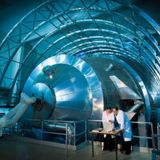
The already tiny neutrino’s maximum possible mass has shrunk even further
To understand neutrinos, it pays to be small-minded.The subatomic particles are so lightweight, they’re almost massless. They’re a tiny fraction of the mass of the next lightest particle, the electron. But scientists still don’t know exactly how slight the particles are. A new estimate from the KATRIN experiment, located in Karlsruhe, Germany, further shrinks the maximum possible mass neutrinos could have.The puny particles have masses of , physicist Diana Parno reported April 19 at a virtual meeting of the American Physical Society. For comparison, electrons are more than 600,000 times as...…To understand neutrinos, it pays to be small-minded.The subatomic particles are so lightweight, they’re almost massless. They’re a tiny fraction of the mass of the next lightest particle, the electron. But scientists still don’t know exactly how slight the particles are. A new estimate from the KATRIN experiment, located in Karlsruhe, Germany, further shrinks the maximum possible mass neutrinos could have.The puny particles have masses of , physicist Diana Parno reported April 19 at a virtual meeting of the American Physical Society. For comparison, electrons are more than 600,000 times as...WW…
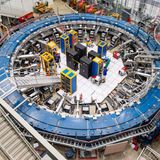
Subatomic particles called muons may defy physics' standard model
A mysterious magnetic property of subatomic particles called muons hints that new fundamental particles may be lurking undiscovered.In a painstakingly precise experiment, muons’ gyrations within a magnetic field seem to defy predictions of the standard model of particle physics, which describes known fundamental particles and forces. The result strengthens earlier evidence that muons, the heavy kin of electrons, behave unexpectedly.“It’s a very big deal,” says theoretical physicist Bhupal Dev of Washington University in St. Louis. “This could be the long-awaited sign of new physics that...…A mysterious magnetic property of subatomic particles called muons hints that new fundamental particles may be lurking undiscovered.In a painstakingly precise experiment, muons’ gyrations within a magnetic field seem to defy predictions of the standard model of particle physics, which describes known fundamental particles and forces. The result strengthens earlier evidence that muons, the heavy kin of electrons, behave unexpectedly.“It’s a very big deal,” says theoretical physicist Bhupal Dev of Washington University in St. Louis. “This could be the long-awaited sign of new physics that...WW…
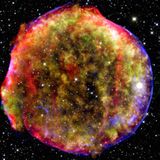
Uranium ‘snowflakes’ could set off thermonuclear explosions of dead stars
Tiny crystals of uranium could set off massive explosions within a dead star, physicists propose, making for a cosmic version of a thermonuclear bomb.Expired stars called white dwarfs slowly cool as they age. In the process, heavy elements such as uranium begin to crystalize, forming “snowflakes” in the stars’ cores. If enough uranium clumps together — about the mass of a grain of sand — it could initiate a chain of nuclear fission reactions, or the splitting of atomic nuclei.Those reactions could raise temperatures within the star, setting off nuclear fusion — the merging of atomic nuclei...…Tiny crystals of uranium could set off massive explosions within a dead star, physicists propose, making for a cosmic version of a thermonuclear bomb.Expired stars called white dwarfs slowly cool as they age. In the process, heavy elements such as uranium begin to crystalize, forming “snowflakes” in the stars’ cores. If enough uranium clumps together — about the mass of a grain of sand — it could initiate a chain of nuclear fission reactions, or the splitting of atomic nuclei.Those reactions could raise temperatures within the star, setting off nuclear fusion — the merging of atomic nuclei...WW…

Can room-temperature superconductors work without extreme pressure?
For decades, scientists quested after a room-temperature superconductor. Now that they’ve finally found one, the hunt is on for an even better material.Until last year, all known superconductors — materials that conduct electricity without resistance — had to be cooled, many to extremely low temperatures, making them impractical for use in most electronic devices. In 2020, physicist Ranga Dias and colleagues reported that was superconducting at room temperature (SN: 10/14/20). But the need for cooling had been swapped for another impractical requirement: The material had to be crushed to...…For decades, scientists quested after a room-temperature superconductor. Now that they’ve finally found one, the hunt is on for an even better material.Until last year, all known superconductors — materials that conduct electricity without resistance — had to be cooled, many to extremely low temperatures, making them impractical for use in most electronic devices. In 2020, physicist Ranga Dias and colleagues reported that was superconducting at room temperature (SN: 10/14/20). But the need for cooling had been swapped for another impractical requirement: The material had to be crushed to...WW…
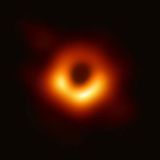
Black hole visionaries push the boundaries of knowledge in a new film
Black holes sit on the cusp of the unknowable. Anything that crosses a black hole’s threshold is lost forever, trapped by an extreme gravitational pull. That enigmatic quality makes the behemoths an enticing subject, scientists explain in the new documentary .The film follows two teams working over the last several years to unveil the mystery-shrouded monstrosities. Scientists with the Event Horizon Telescope attempt to make the first image of a black hole’s shadow using a global network of telescopes. Meanwhile, a small group of theoretical physicists, anchored by Stephen Hawking — who was...…Black holes sit on the cusp of the unknowable. Anything that crosses a black hole’s threshold is lost forever, trapped by an extreme gravitational pull. That enigmatic quality makes the behemoths an enticing subject, scientists explain in the new documentary .The film follows two teams working over the last several years to unveil the mystery-shrouded monstrosities. Scientists with the Event Horizon Telescope attempt to make the first image of a black hole’s shadow using a global network of telescopes. Meanwhile, a small group of theoretical physicists, anchored by Stephen Hawking — who was...WW…
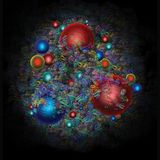
Protons’ antimatter is even more lopsided than we thought
The proton’s antimatter is out of whack. An imbalance between two types of antiparticles that seethe within the proton is even wonkier than previously thought, a new measurement indicates.Protons are built from three quarks — two “up” quarks and one “down” quark. But they also contain a roiling sea of transient quarks and antiquarks that fluctuate into existence before swiftly annihilating one another. Within that sea, down antiquarks outnumber up antiquarks, measurements revealed in the 1990s. And in a realm of quark momenta previously unexplored, researchers from the SeaQuest experiment...…The proton’s antimatter is out of whack. An imbalance between two types of antiparticles that seethe within the proton is even wonkier than previously thought, a new measurement indicates.Protons are built from three quarks — two “up” quarks and one “down” quark. But they also contain a roiling sea of transient quarks and antiquarks that fluctuate into existence before swiftly annihilating one another. Within that sea, down antiquarks outnumber up antiquarks, measurements revealed in the 1990s. And in a realm of quark momenta previously unexplored, researchers from the SeaQuest experiment...WW…
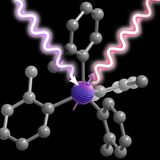
‘Designer molecules’ could create tailor-made quantum devices
Quantum bits made from “designer molecules” are coming into fashion. By carefully tailoring the composition of molecules, researchers are creating chemical systems suited to a variety of quantum tasks.“The ability to control molecules … makes them just a beautiful and wonderful system to work with,” said Danna Freedman, a chemist at Northwestern University in Evanston, Ill. “Molecules are the best.” Freedman February 8 at the annual meeting of the American Association for the Advancement of Science, held online.Quantum bits, or qubits, are analogous to the bits found in conventional...…Quantum bits made from “designer molecules” are coming into fashion. By carefully tailoring the composition of molecules, researchers are creating chemical systems suited to a variety of quantum tasks.“The ability to control molecules … makes them just a beautiful and wonderful system to work with,” said Danna Freedman, a chemist at Northwestern University in Evanston, Ill. “Molecules are the best.” Freedman February 8 at the annual meeting of the American Association for the Advancement of Science, held online.Quantum bits, or qubits, are analogous to the bits found in conventional...WW…
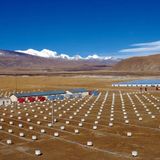
The Milky Way’s newfound high-energy glow hints at the secrets of cosmic rays
The Milky Way glows with a gamma ray haze, with energies vastly exceeding anything physicists can produce on Earth, according to a new paper. Gamma rays detected in the study, to be published in Physical Review Letters, came from throughout the galaxy’s disk, and reached , known as a petaelectron volt or PeV.These diffuse gamma rays hint at the existence of powerful cosmic particle accelerators within the Milky Way. Physicists believe such accelerators are the source of mysterious, highly energetic cosmic rays, charged particles that careen through the galaxy, sometimes crash-landing on...…The Milky Way glows with a gamma ray haze, with energies vastly exceeding anything physicists can produce on Earth, according to a new paper. Gamma rays detected in the study, to be published in Physical Review Letters, came from throughout the galaxy’s disk, and reached , known as a petaelectron volt or PeV.These diffuse gamma rays hint at the existence of powerful cosmic particle accelerators within the Milky Way. Physicists believe such accelerators are the source of mysterious, highly energetic cosmic rays, charged particles that careen through the galaxy, sometimes crash-landing on...WW…
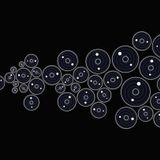
Explore every gravitational wave event spotted so far
Subscribers, enter your e-mail address for full access to the Science News archives and digital editions.Not a subscriber?.Here’s why you should subscribe anyway.To celebrate our centennial, we have made our entire archive available for free. But quality journalism comes at a price. Support the next century of science journalism. Subscribe to Science News for as little as $2.99 a month.I'm already a subscriberNot today. Take me to the article…Subscribers, enter your e-mail address for full access to the Science News archives and digital editions.Not a subscriber?.Here’s why you should subscribe anyway.To celebrate our centennial, we have made our entire archive available for free. But quality journalism comes at a price. Support the next century of science journalism. Subscribe to Science News for as little as $2.99 a month.I'm already a subscriberNot today. Take me to the articleWW…

Drones could help create a quantum internet
The quantum internet may be coming to you via drone.Scientists have now used drones to transmit particles of light, or photons, that share the quantum linkage called entanglement. The photons were sent to , researchers from Nanjing University in China report in a study to appear in Physical Review Letters.Entangled quantum particles can retain their interconnected properties even when separated by long distances. Such counterintuitive behavior can be harnessed to allow new types of communication. Eventually, scientists aim to build a global quantum internet that relies on transmitting...…The quantum internet may be coming to you via drone.Scientists have now used drones to transmit particles of light, or photons, that share the quantum linkage called entanglement. The photons were sent to , researchers from Nanjing University in China report in a study to appear in Physical Review Letters.Entangled quantum particles can retain their interconnected properties even when separated by long distances. Such counterintuitive behavior can be harnessed to allow new types of communication. Eventually, scientists aim to build a global quantum internet that relies on transmitting...WW…